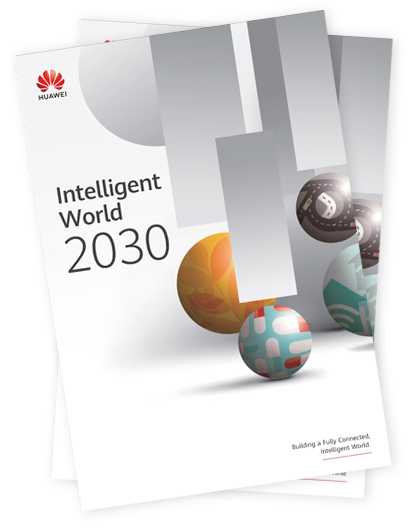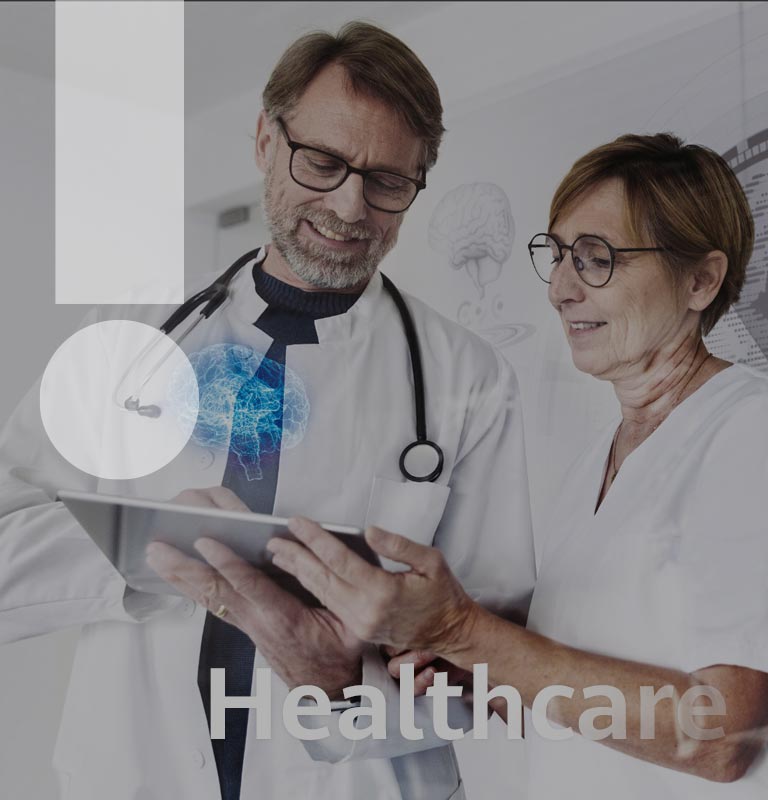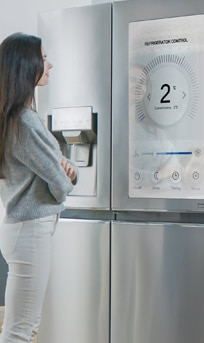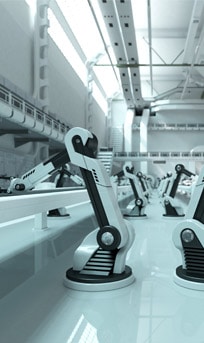Making Health Computable, Bettering Quality of Life
By 2030, sensitive biosensors will be in widespread use, and massive amounts of health data will be stored on the cloud, making health computable. People will be able to proactively manage their health, shifting focus from treatment to prevention. Driven by technologies such as IoT and AI, personalized treatments will become a reality. Portable medical devices will enable people to access coordinated telemedicine services from the comfort of their homes.
Predictions
Directions for Exploration
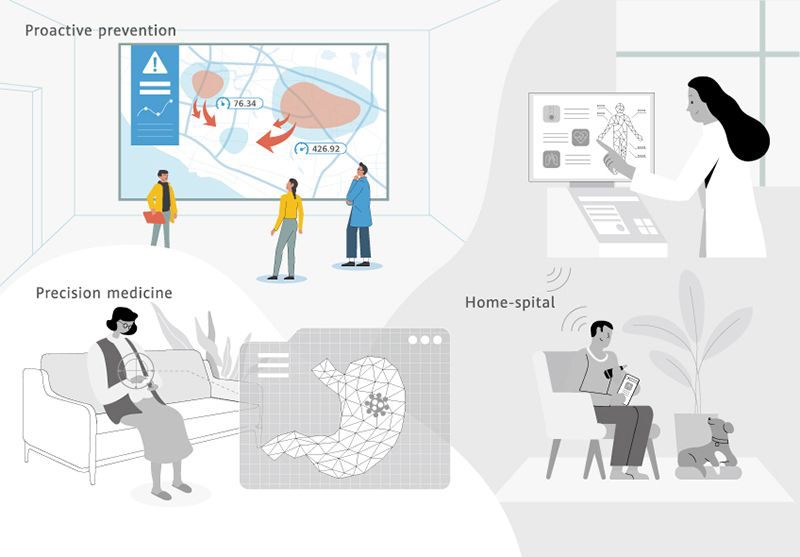
Using computing technologies to identify potential health problems, shifting the focus from treatment to prevention
Snapshot from the future: Building a knowledge graph to achieve real-time and efficient health management
Technologies such as big data and IoT will enable doctors to build knowledge graphs based on users' data, including health indicators, medical diagnoses, and treatment results. Doctors can compare and analyze the knowledge graphs to formulate personalized health solutions for users.
One digital health company built a knowledge graph to examine relationships between diet and disease. The health management survey conducted by the company showed that the participants recorded an average 35 minutes more sleep daily, and a total body weight roughly 1.5 kg lighter across the year , which translated into lower probability of disease.
Health knowledge graphs and medical knowledge graphs can also be used together to predict users' disease risks and future health status. They can also help doctors achieve more rapid and accurate diagnosis.
Snapshot from the future: Making infectious disease prediction more accurate
New digital technologies, such as natural language processing, can also broaden the amount of data that can be used for epidemiological management. These technologies allow public health institutions to collect and analyze news articles, reports, and search engine indexes to track major public health events around the world. A technology company has used natural language processing and machine learning to gather data from hundreds of thousands of public sources, including statements from official public health organizations, digital media outlets, global airline ticketing agencies, as well as livestock health reports and population demographics, to analyze the spread of disease 24 hours a day.
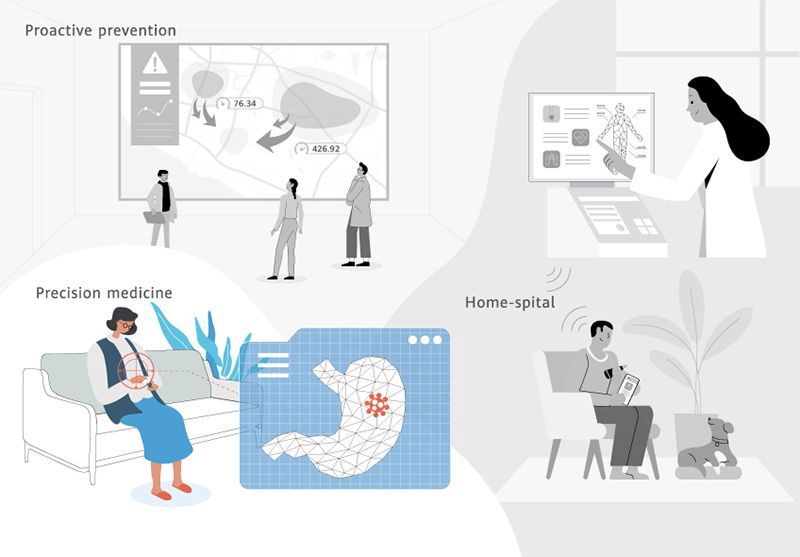
Precision medicine and treatment plans
Snapshot from the future: More accurate drug trials shifting treatment from "one-size-fits-all" to "bespoke"
In normal circumstances, doctors do not have much time to understand every aspect of a patient's condition. They mainly rely on their expertise and experience to quickly formulate a general treatment plan.
However, AI can help doctors develop personalized treatment plans by analyzing thousands of pathology reports and treatment plans, and determining which would be most appropriate for each patient.
One research institute in Singapore has even created an AI-powered pharmaceutical platform that optimizes medication dosages. The platform can quickly analyze a patient's clinical data, provide the patient with a recommended drug dose or combination regimen based on their specific condition, and revise tumor sizes or biomarkers levels based on available data.
Snapshot from the future: Achieving safe & precise identification of cancer cells with AI
Precision medicine can help the fight against cancer. With the help of AI technology, adaptive radiation therapy (ART) systems can automatically identify changes in lesion positioning and more accurately outline the target areas for radiation treatment. This helps focus the radiation on just the cancer cells and reduces damage to healthy tissue.
AI is already enabling accurate identification and automatic contouring of target areas for various types of medical imaging, including CT, ultrasound, and MRI. AI-based image registration can automatically identify organs and target areas based on clinical needs, making image registration faster and more accurate. With the help of AI, a contouring workload that would once have taken hours can now be completed in less than a minute, and the damage caused by radiation therapy to healthy tissue can be reduced by 30%.
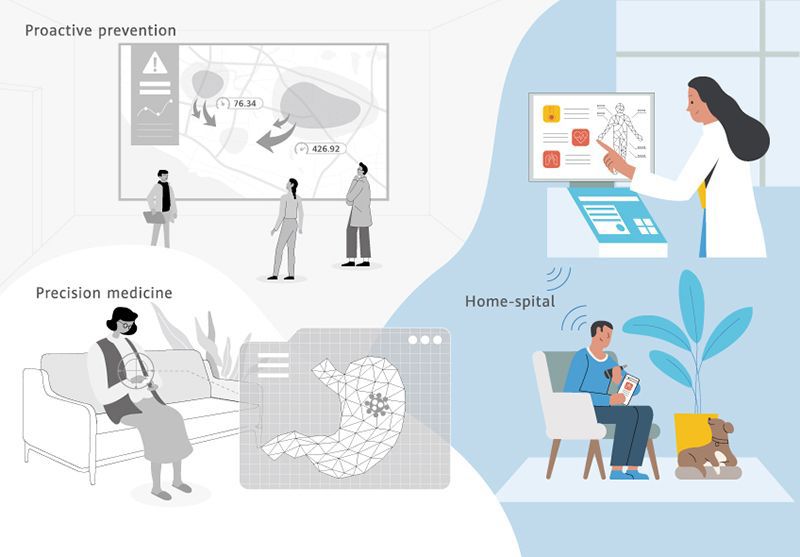
Home-spital: Using cloud-edge-device synergies to bring healthcare services into patients' homes
Snapshot from the future: Portable devices that lower the threshold for professional medical examinations
As components get smaller and chip technology advances, large medical devices that previously could only be used in hospitals are now becoming portable, making mobile medical examinations a reality.
Handheld ultrasound scanners are a prime example of this trend. Compact and portable scanners are equipped with the same functions as bulky conventional scanners. This is possible because the functions of conventional ultrasound probes are integrated into a single chip used in portable scanners. A handheld ultrasound scanner costs only a few thousand US dollars, but has the same functionality of a bulky conventional scanner, on which hospitals often spend more than US$100,000.
Snapshot from the future: Cloud-based diagnosis services connecting patients with top experts online
In the near future, the complex processing workloads of imaging devices will be handled in the cloud. Doctors will soon be able to access medical imaging results and AI-assisted diagnostic tools through the cloud. Medical images, examination results, and medical records will be synchronized in real time. This will help doctors provide patients with remote diagnoses and treatment services, wherever they are.
With the application of a "device data collection + 5G + cloud computing" model, medical images can be more easily shared between community hospitals and medical centers. After images are captured on medical devices in community hospitals, they can be automatically or manually uploaded to the cloud. Experts in medical centers can then access the images on the cloud and issue diagnostic reports.
More Outlooks
